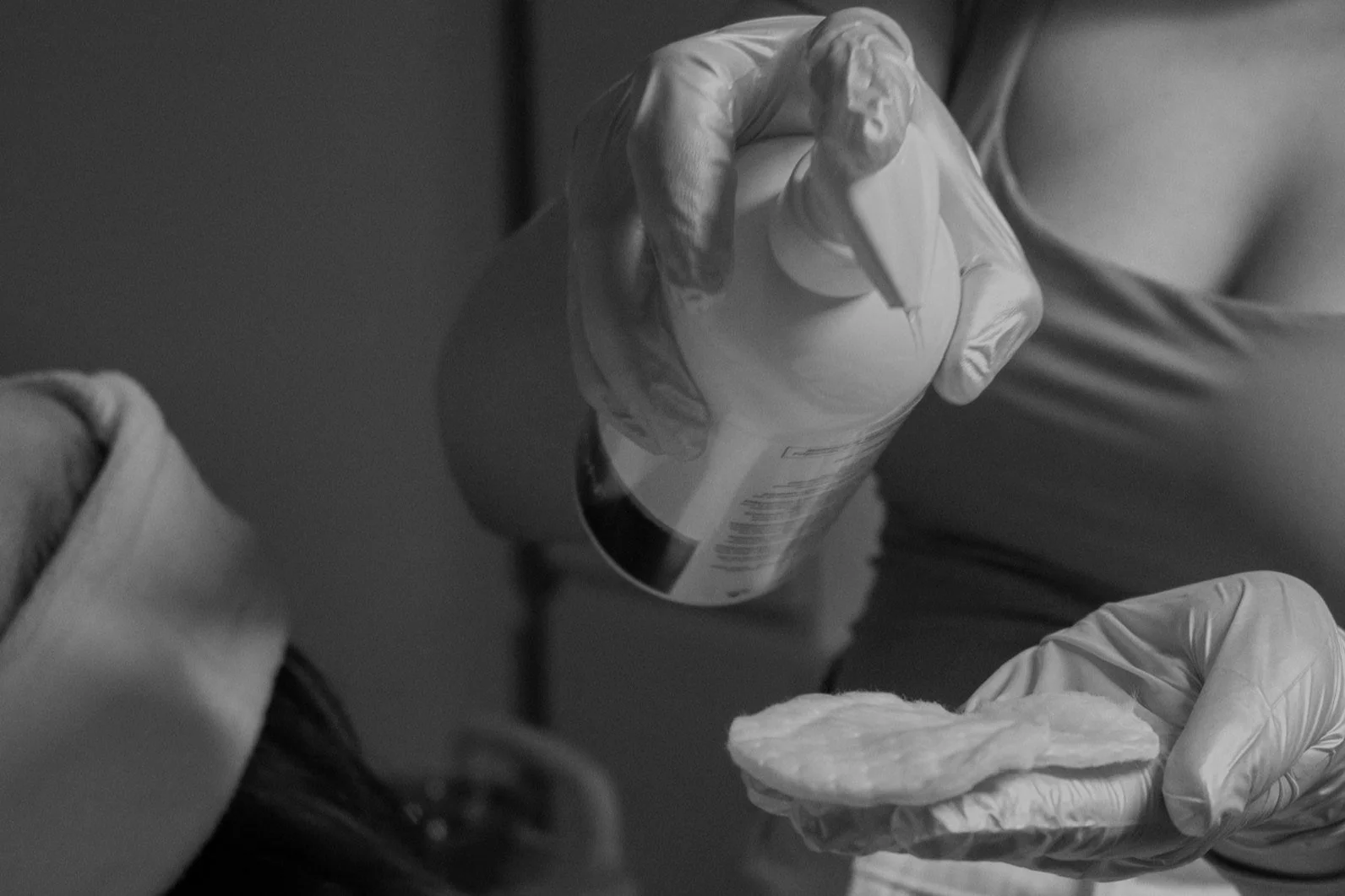
DERMAPLANING
Facial Treatments to revitalize dull skin.
What is Dermaplaning?
Dermaplaning is a non-invasive, exfoliating skincare treatment that removes dead skin cells and fine vellus hair—commonly known as “peach fuzz”—from the surface of the face using a sterile, surgical-grade blade.
This popular service leaves the skin incredibly smooth, radiant, and more receptive to skincare products. Dermaplaning also improves the appearance of fine lines and can help create a flawless base for makeup application.
Does Dermaplaning hurt?
No—dermaplaning is completely pain-free! In fact, many clients describe the sensation as soothing, similar to a gentle brushing. To avoid any sensitivity or irritation, I use a nourishing oil to prep the skin and help provide a seamless glide.
Is it recommended to Dermaplane with acne?
If you have active, inflamed acne, dermaplaning is not recommended. This service is ideal for those with dry, dull skin or minor textural concerns, but dermaplaning over inflamed lesions can cause further irritation.
However, if you experience non-inflamed breakouts or post-acne scarring, dermaplaning can help smooth the skin and reduce the appearance of blemishes.
Will Dermaplaning make my hair grow back thicker?
This is one of the biggest myths about dermaplaning—and it’s simply not true. Dermaplaning does not change the structure or thickness of your facial hair. When hair grows back after dermaplaning, it may feel slightly different because it was cut bluntly rather than tapered (as with natural growth), but it is not coarser, darker, or thicker.
Your hair will return just as it was before.
Will Dermaplaning make me break out?
Dermaplaning itself does not cause breakouts—in fact, it can help prevent them when done by a skincare professional. By removing the layer of dead skin cells and trapped debris, dermaplaning allows your skincare products to penetrate more deeply and work more effectively.
I see people Dermaplaning at home, what is the difference?
The key difference between at-home dermaplaning and professional dermaplaning lies in the tools, technique, and results. At home, you’re using a disposable facial razor that lightly removes peach fuzz but offers minimal exfoliation. In contrast, a licensed esthetician uses a surgical-grade scalpel to deeply exfoliate dead skin and debris with precision. DIY dermaplaning can lead to irritation, breakouts, or uneven results due to lack of training, while professionals tailor the treatment to your skin type for a smoother, brighter, and safer outcome.
How often should I Dermaplane?
You should get professional dermaplaning every 4 to 6 weeks, depending on your skin type and goals. This timing aligns with your skin’s natural cell turnover cycle, allowing dead skin and peach fuzz to build up just enough for optimal exfoliation without overdoing it.
Regular sessions help maintain a brighter complexion, smoother texture, and better product absorption, while reducing fine lines and clogged pores. Consistency is key for lasting, glowing results.
How long before a special event should I Dermaplane?
For best results, you should schedule your dermaplaning appointment 3 to 5 days before a special event. This gives your skin time to settle, glow naturally, and fully benefit from the enhanced product absorption and smooth texture—perfect for flawless makeup application.
